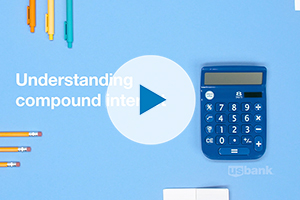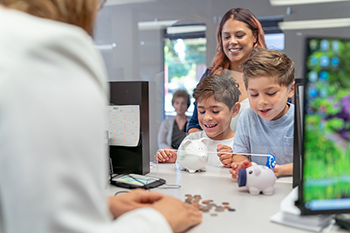
Certificates of deposit: How they work to grow your money

How compound interest works

When your to-do list is lengthy and consists of multiple money transactions like paying bills or paying people back, implementing automation strategies and digital payments can help you breeze through—or even remove—some of the tasks on your list.
If you send money often, tools like automated bill pay can help you avoid late payments, while payment services like Zelle®, enable quick, fee-free payments between friends and family.
Let’s explore three effective money transferring and payment tools designed to help simplify this task.
Money automation tip 1: Automatic bill pay and recurring transfers
Missing a bill payment can happen to even the most organized of us. To avoid this and any associated fees in the future, consider initiating automatic bill payments or automatic debits. Automation is a popular tool, with more than one-third of consumers’ recurring monthly services bills set on auto-pay. Don’t worry if you’re not sure how to set this system up; your local bank branch can help you feel confident in arranging and canceling transfers.
And strategic financial automations don’t have to stop there. Scheduling recurring transfers to savings and investment accounts is an easy, hands-off way to build up funds. For many, this takes the temptation out of spending that money impulsively or on short-term goals. Similar to automatic bill pay, you can choose for the transfers to happen on the same day each month.
Keep in mind that once automatic transfers are set—whether for bill payments, savings or investments—they are easy to forget about. If you don’t look at your account regularly and the money taken out, you risk overdrawing.
Despite the benefits of automating and digitizing your financial life, it’s important to think strategically about what you choose to automate. U.S. Bank Branch Manager Clarence Ho frequently assists his customers with problems just like this. “Even if someone has the automatic transfer doesn’t mean that they don’t need to look at the bank statement,” Ho emphasized, encouraging account holders to “check in here and there consistently.”
Money automation tip 2: Bank account alerts
Ho is a fan of account alerts and uses them often to send text messages or emails to customers. “Sometimes we have unforeseen circumstances that may lead to the overdraft of the account,” Ho said. He pointed out that alerts can signal to customers that there might be an unauthorized transaction or an overdraft. These alerts help prevent customers from spending more before getting to the root of the issue or potentially incurring more fees.
Enabling alerts is a popular topic when bankers educate their customers to help them avoid incurring overdraft or late fees. When it comes to money transfers, account alerts like those indicating a low balance can help you know if an automatic payment or transfer should be canceled due to insufficient funds in your account.
Beyond opting into overdraft account and unusual activity messages, other alerts to consider turning on include:
High balance alerts to remind you to move extra money into a savings account or put toward a car loan or credit card payment.
Direct deposit alerts to help you determine when to make larger purchases and schedule recurring bill payments.
Large ATM withdrawal alerts to let you know when unusually big withdrawals occur and your checking account might be slimmer than you thought. This is especially helpful if you have a joint account.
Money automation tip 3: Payment services
Do you have a list of IOUs stacking up? Maybe it’s no longer top of mind or you haven’t been to the ATM recently. A payment service, such as Zelle®, can help. Since launching in 2017, nearly 10,000 financial institutions have joined Zelle®. This popular payment service—facilitating 1.8 billion payments in 2021 alone—allows friends and family to send money between their U.S. bank accounts without incurring any fees if sent via the U.S. Bank Mobile App or online banking. And it happens fast, with money usually received within minutes1 for recipients who are already enrolled in Zelle®. Users typically access Zelle® through their bank’s mobile app or website and simply need the recipient’s mobile phone number or email address to send money their way.
While payment services are a common way to send money, it’s worth taking precautions to protect yourself from fraud or scams. For example, only send money to people you know personally and trust while you double check your recipient’s email or phone number is correct.
These three money automation tools can uncomplicate your financial to-do list and make managing your money much less time-consuming. While none of these resources are overly complicated, they’ll work best for those who are tech savvy and comfortable navigating apps on their smartphone.
Discover more financial tools and tips by visiting our resource page for more information.
Related content


